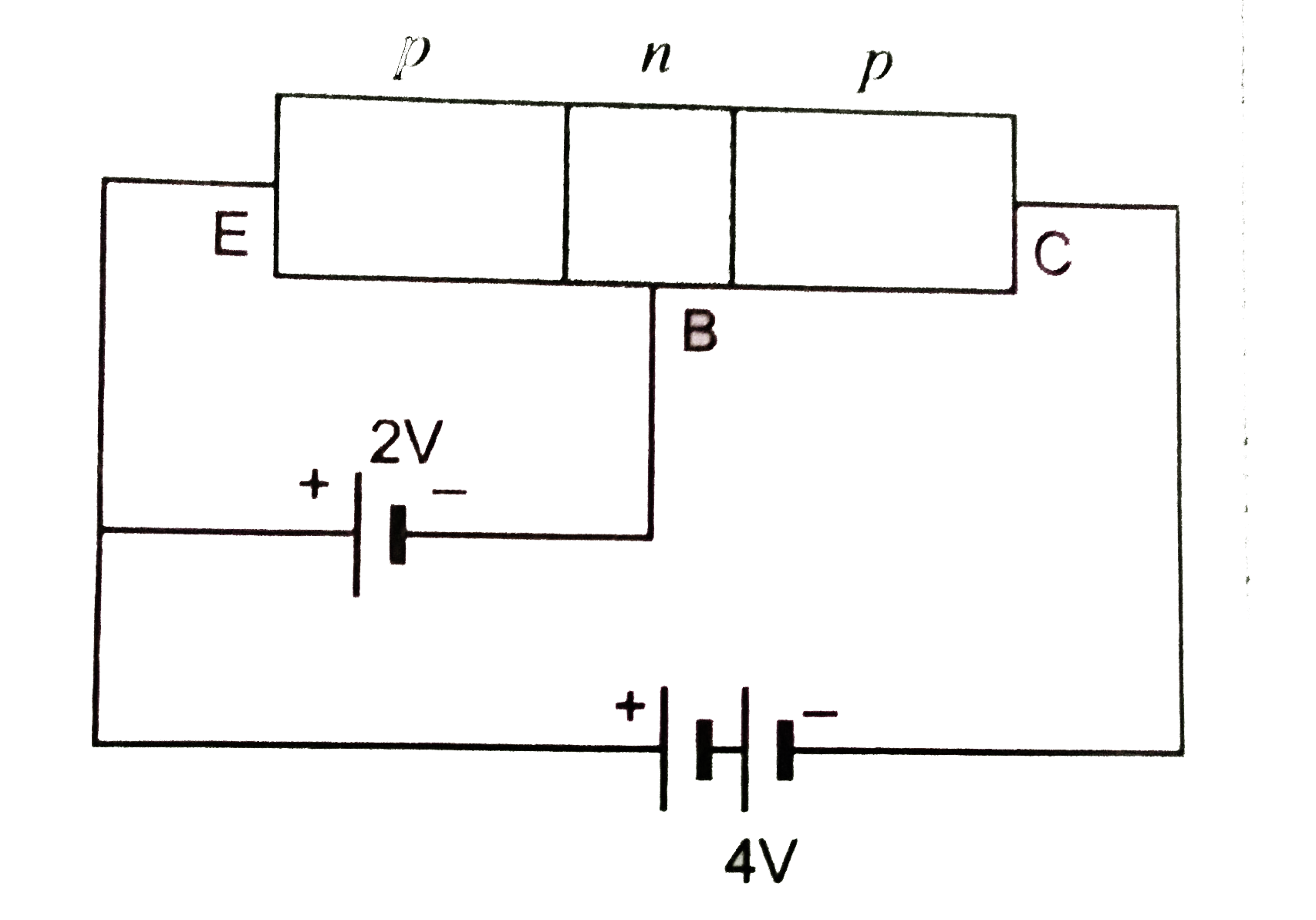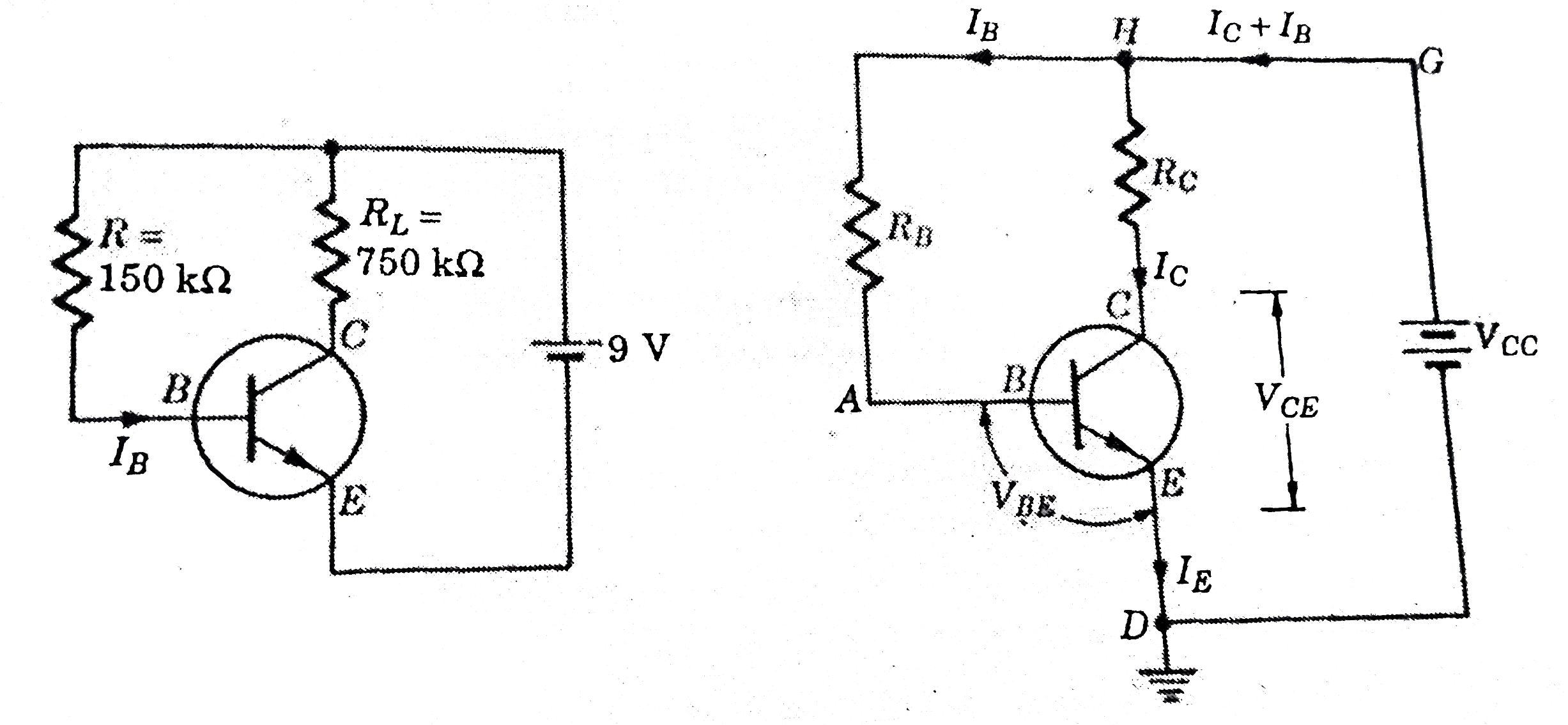The minimum potential difference between the base and emitter required to switch a silicon transistor 'ON' is approximately:
3V
1V
5V
4.2V
The correct Answer is:B
To switch on the transistor, the emitter-base junction of a transistor is forward biased while collector-base junction is reverse biased. The cut-off voltage for silicon is ~1V, so to switch on a silicon transistor a potential difference of 1V approximately is required between the base and emitter.
Topper's Solved these Questions
- SEMICONDUCTOR ELECTRONICSBOOK - A2ZCHAPTER - SEMICONDUCTOR ELECTRONICSEXERCISE - Assertion Reason
18 Videos
- SEMICONDUCTOR ELECTRONICSBOOK - A2ZCHAPTER - SEMICONDUCTOR ELECTRONICSEXERCISE - SECTION -D
1 Video
- SEMICONDUCTOR ELECTRONICSBOOK - A2ZCHAPTER - SEMICONDUCTOR ELECTRONICSEXERCISE - AIPMT/NEET Questions
77 Videos
- NUCLEAR PHYSICSBOOK - A2ZCHAPTER - NUCLEAR PHYSICSEXERCISE - Section D - Chapter End Test
29 Videos
- SOURCE AND EFFECT OF MAGNETIC FIELDBOOK - A2ZCHAPTER - SOURCE AND EFFECT OF MAGNETIC FIELDEXERCISE - Section D - Chapter End Test
30 Videos
Similar Questions
In the p-n-p transistor circuit shown in Fig.

What is the potential difference between base and collector?
What is the nature of biasing between emitter base junction and collector-base junction?
View SolutionThe dc common emitter current gain of a n-p-n transistor is 50. The potential difference applied across the collector and emitter of a transistor used in CE configuration is, VCE=2V. If the collector resistance, RC=4kΩ, the base current (IB) and the collector current (IC) are
View Solution
Knowledge Check
At the base emitter junction of a transistor one finds
Aforward biasBnarrow depletion layerClow resistanceDall the three (1, 2 and 3)Emitter base and collector base junction in n-p-n transistor are
Aforward biased and reverse biased respectivelyBreverse biased and forward biased respectivelyCboth forward biasedDboth reverse biasedThe dc common emitter current gain of a n-p-n transistor is 50. The potential difference applied across the collector and emitter of a transistor used in CE configuration is, VCE=2V. If the collector resistance, RC=4Ω, the base current (IB) and the collector current (IC) are
AIB=10μA,IC=0.5mABIB=0.5μA,IC=10mACIB=5μA,IC=1mADIB=1μA,IC=0.5mA
In a transistor circuit shown in fig, R has a resistance of 150kΩ,RL has a resistance of 750Ω, and the direct current gain of the transistor is 80. Assuming ther is negligible potential difference between B and E, calculate (a) the base current rent IB and (b) the potential difference betwen the collector and emitter.

View SolutionThe potential difference across the collector of a transistor, used in common emitter mode is 1.5V, with the collector resistance of 3kΩ. Find (i) the emitter current and (ii) the base current, if d.c. gain of the transistor is 50.
View SolutionHow is the emitter base junction in the transistor biasing ?
View SolutionThe output characterstics of an n−p−n transistor represent, [IC = Collector current, VCE = potential difference between collector and emitter, IB = Base current, VBB = voltage given base , VBE = the potential difference between base and emitter].
View SolutionThe potential difference across the collector of a transistor, used in common emitter mode is 1.5 V, with the collector resistance of 3kΩ, the emitter current is [β−50]
View Solution
